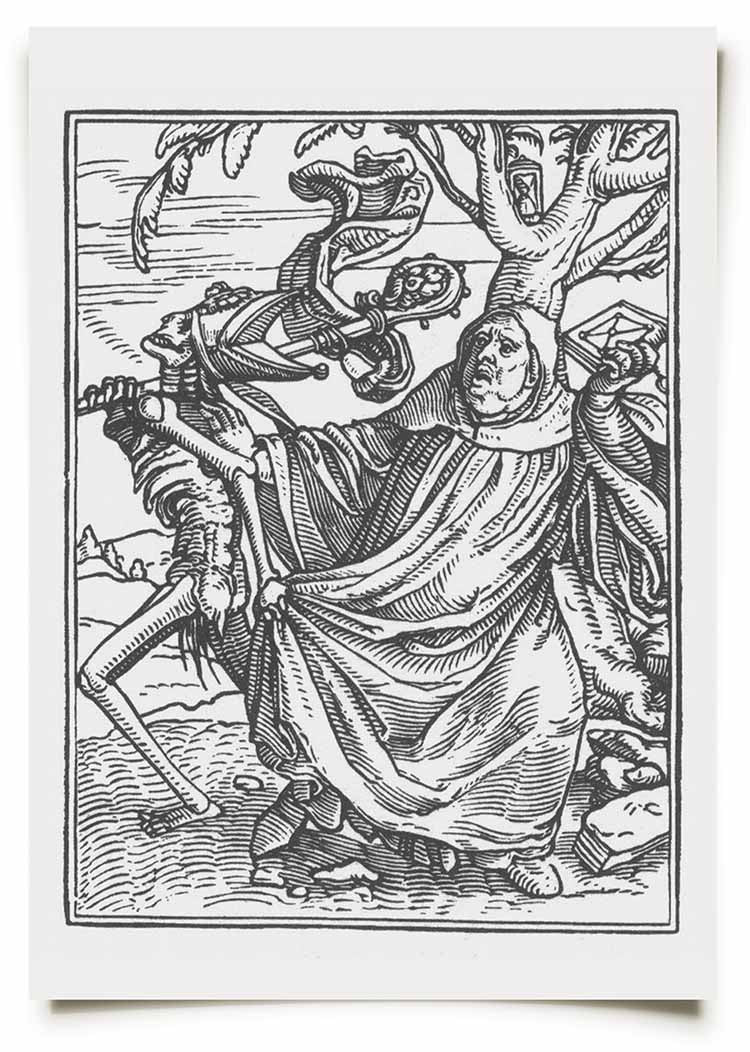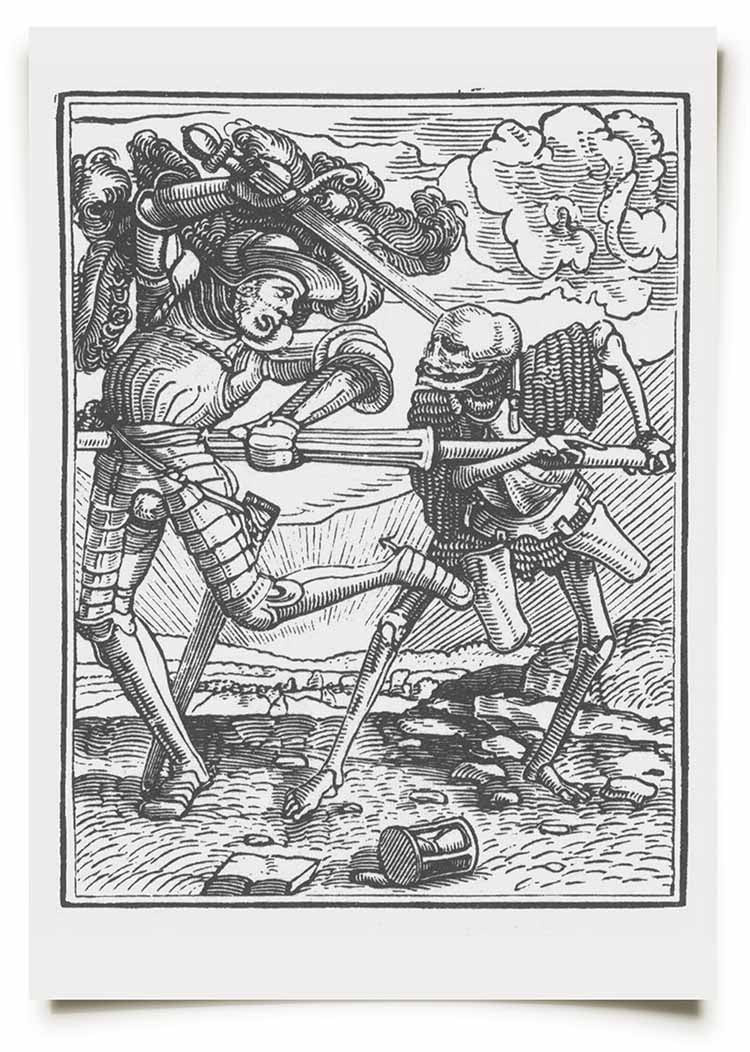TATTOO INFLUENCE: Death prints by Hans Holbein
It's always good to have a break from the drawing board. I can only handle a few hours before it starts messing with my head! So, now seems like a good time to start one of those projects I have been thinking about for a while. It also seems more productive than spending the afternoon on Youtube...again.
Over the the past four or five years, we have worked to develop a visual language and artistic style that is recognisably ours. I want to dig a little deeper into the art that has influenced us, and introduce you to some of the artists that have a played a part in steering the direction of the La Mort Clothing brand.
I won't be mentioning too much about the lives of the artists (you can check them out on Google if you're interested), as I'll be focussing more on their techniques and the visual impact their work makes.
Let's kick things off by taking a look at one of history's most amazing printmakers; Hans Holbein.
TOTENTANZ (DANSE MACABRE)
Hans Holbein the Younger, was a German painter and printmaker who was active in the first half of the 16th century. As with most well-known artists from that period, he seems to have been amazing at everything. He was an excellent draftsman and painter, as well as being a print maker. It is this last part that we're interested in.
In 1526, Holbein completed his first drawings for a series of prints known as The Dance of Death. It was his take on a common allegory of the time, which pushed the idea that Death is coming for you, no matter who you are. There was some seriously dark shit going on during the Renaissance.
THE WORK
The series of prints totalled 41, with six shown below, and it was over 12 years after their creation that they were first published in book form.






TECHNIQUE AND INFLUENCE
Wood cut printing, which was the technique used to produce these prints, relies on a drawing being transferred to a wooden block, before areas are cut away to produce a raised design. When the block has been carved or 'cut', ink is rolled onto the raised areas before the block is pressed onto a sheet of paper to make a print.
The process means that the artist who draws the initial design does not always cut their own blocks. In the case of this series, the blocks were cut by an excellent printmaker called Hans Lützelburger. It's as much the style of block cutting, as it is the designs, that interests us.
The style, in general, produces bold black lines, much like inking with a pen, and this series in particular highlights the insane amount of work that goes into producing art in this way. I absolutely love the intensity of this work and we are often asked if our work is wood cut printed. Sadly, as it's so time consuming, I've not started to get into it yet. One day I'll get the chance.
When one of us is working on a piece and we are struggling with how to approach a certain area, we usually find an old book of prints for inspiration. More often than not, the answer lays in the work of others. Over time, we have looked at so many artists that we have absorbed different styles, and now work in our own way.
Which artists do you think we should be looking at next? Let us know in the comments below.
